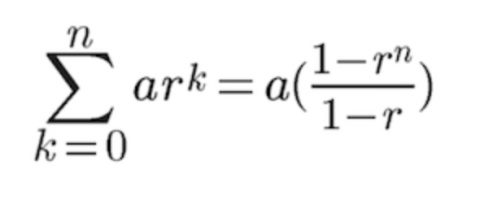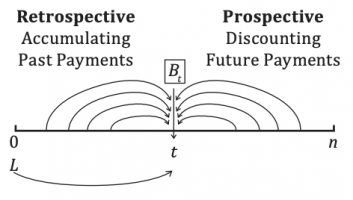I have a problem in geometric progression chapter, Core Mathematics 2 A-Level, for Exedcel exam, of and it goes like this: the amount of 80000 should be reduced each year by 5000 but a rate of 4% is applied on the remaining debt, I am asked about the total time which the amount will be paid? (25y/book answer)
I believe if it were a linear progression it would go like this d=80000-500t, where d stands for debt and t, time in years. It is pretty clear that it would take 16 years if nothing is applied to initial amount. Like the physics equation vf=vi-at...
Following the rule I get this figures 78000 ((80000-5000)x1.04) for first year, 75920 ((78000-5000)x1.04) for the second year, the third year being 73756.80, fourth 71507.07 and so on. Dividing the second by the first, second by the third to find common ration I get something around 0.97... Would be right to set up something like d=80000(0.97...)^t or is there factor that could be applied to d=80000-5000t where a variable correction factor is added to 80000 so it increases in small steps? I believe I can not do something like log(0)=Log(80000(0.97...)^t) to find the time in years, there is no such thing as log(0)...
I research a equation to get that result in some business math tutorials, despite the lingo, they always have the time variable with them and that is precisely what I need to get to. This book has some dodge answer in the back but the majority is correct. I am also uploading a picture of it so you can actually read the problem as well.

I believe if it were a linear progression it would go like this d=80000-500t, where d stands for debt and t, time in years. It is pretty clear that it would take 16 years if nothing is applied to initial amount. Like the physics equation vf=vi-at...
Following the rule I get this figures 78000 ((80000-5000)x1.04) for first year, 75920 ((78000-5000)x1.04) for the second year, the third year being 73756.80, fourth 71507.07 and so on. Dividing the second by the first, second by the third to find common ration I get something around 0.97... Would be right to set up something like d=80000(0.97...)^t or is there factor that could be applied to d=80000-5000t where a variable correction factor is added to 80000 so it increases in small steps? I believe I can not do something like log(0)=Log(80000(0.97...)^t) to find the time in years, there is no such thing as log(0)...
I research a equation to get that result in some business math tutorials, despite the lingo, they always have the time variable with them and that is precisely what I need to get to. This book has some dodge answer in the back but the majority is correct. I am also uploading a picture of it so you can actually read the problem as well.

Last edited by a moderator:


